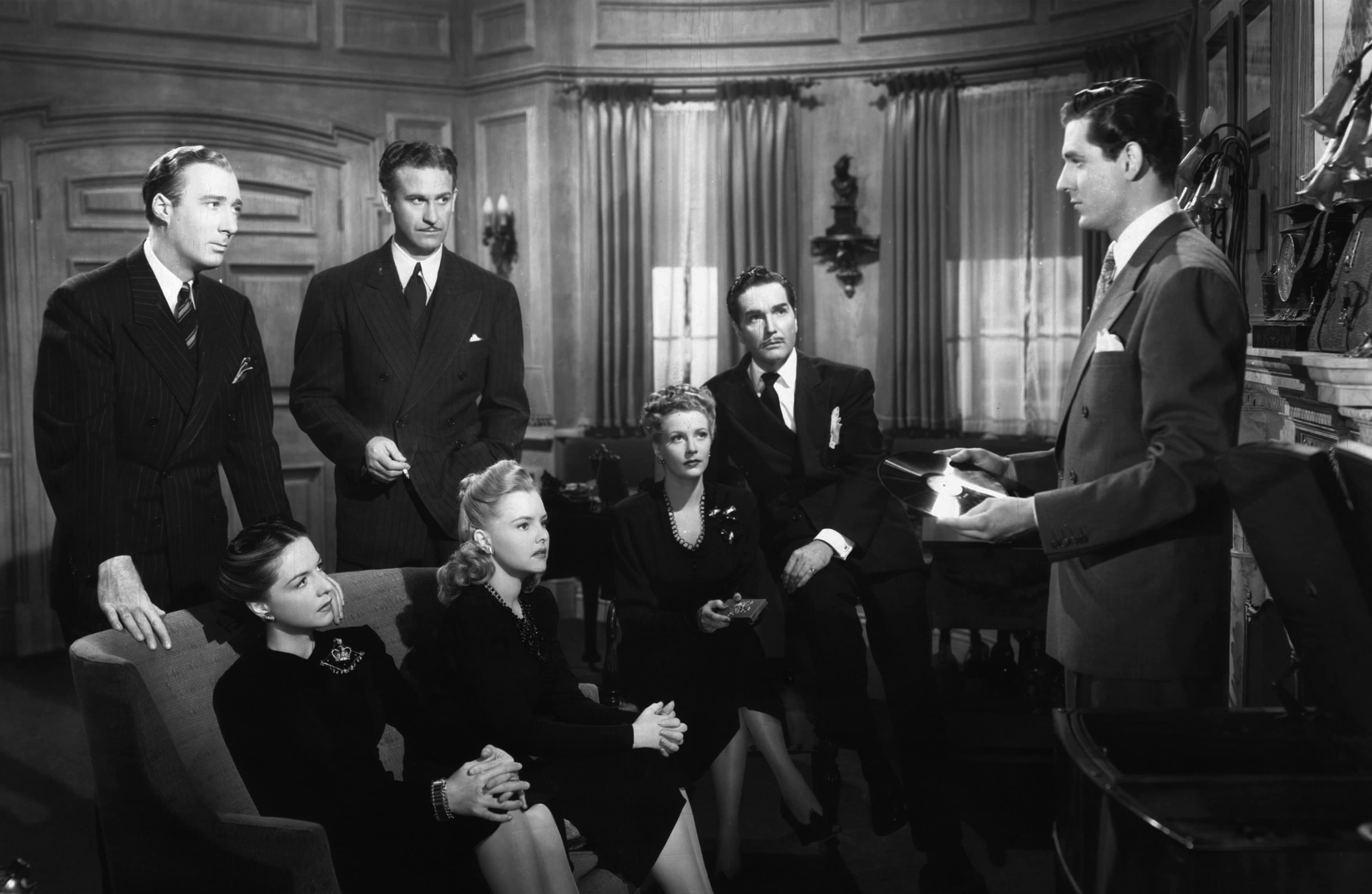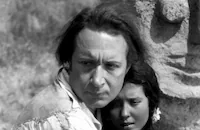The Hidden Hand

Brief Synopsis
Cast & Crew
Ben Stoloff
Craig Stevens
Elisabeth Fraser
Julie Bishop
Willie Best
Frank Wilcox
Film Details
Technical Specs

Synopsis
Insane murderer John Channing escapes from the state asylum and manages to return home, where his sister Lorinda is waiting for him. Convinced that all her relatives are after her money, Lorinda has hatched an elaborate plot to test them. She suggests that John pretend to be the new butler, Martin. After her nephews Horace and Walter Channing arrive with their wives Estelle and Rita, Lorinda announces that she has left all her money to her secretary, Mary Winfield, who is in love with Lorinda's attorney, Peter Thorne. Soon after her announcement, a flowerpot falls out of a window, narrowly missing Mary and Lorinda as they walk together. Lorinda collapses and Dr. Lawrence Channing, another nephew, is sent for. Lorinda tells Lawrence that she wants her relatives to believe that she is dead and asks him to put her in a temporary state of suspended animation. She then tells him that he will earn $10,000 when she is revived, but will receive even more money when she dies. That night Lorinda "dies," and a short time later, a maid drinks water from a pitcher in Mary's room and dies as well. John removes the maid's body from Mary's room and tells everyone that she has returned home to her mother. After Lorinda's funeral, Peter plays a recording that Lorinda made, on which she announces that she is leaving half her fortune to Mary, one quarter to Lawrence and $1.00 each to her other nephews. According to the recording, the other quarter is hidden somewhere in the house, and it and the house will go to whomever finds the money. Lawrence is about to revive Lorinda when, realizing that he will be much richer if she dies, he decides not to give her the antidote. After Lorinda's casket is placed in the vault, other people in the house mysteriously disappear. Having found a hidden clue, Lawrence starts to follow it, only to see Lorinda waiting for him. She explains that John was instructed to give her the antidote if Lawrence failed to do so. She adds that he also helped her with her murder plans and was responsible for poisoning the maid. Now, because of their schemes, all the greedy relatives who have searched for the fortune have fallen to their deaths through a trap door secretly activated when the instructions on the clue are followed. When Mary tries the trap's fatal switch, Lorinda rushes to stop her and, in the process, falls to her own death. John's true identity is revealed, and he is returned to the asylum.

Director
Ben Stoloff
Cast

Craig Stevens
Elisabeth Fraser

Julie Bishop

Willie Best
Frank Wilcox

Cecil Cunningham
Ruth Ford
Milton Parsons
Marian Hall
Roland Drew
Tom Stevenson
Wade Boteler
George Guhl
Kam Tong
Stuart Holmes
Creighton Hale
Inez Gay

Monte Blue

Jack Mower
Crew
Milo Anderson
Everett A. Brown
Anthony Coldewey
Stanley Fleischer
George James Hopkins
Harold Mclernon
Don Page
Raymond Schrock
Harry Seymour
Henry Sharp
Perc Westmore

Film Details
Technical Specs

Articles
The Hidden Hand -
By Richard Harland Smith














